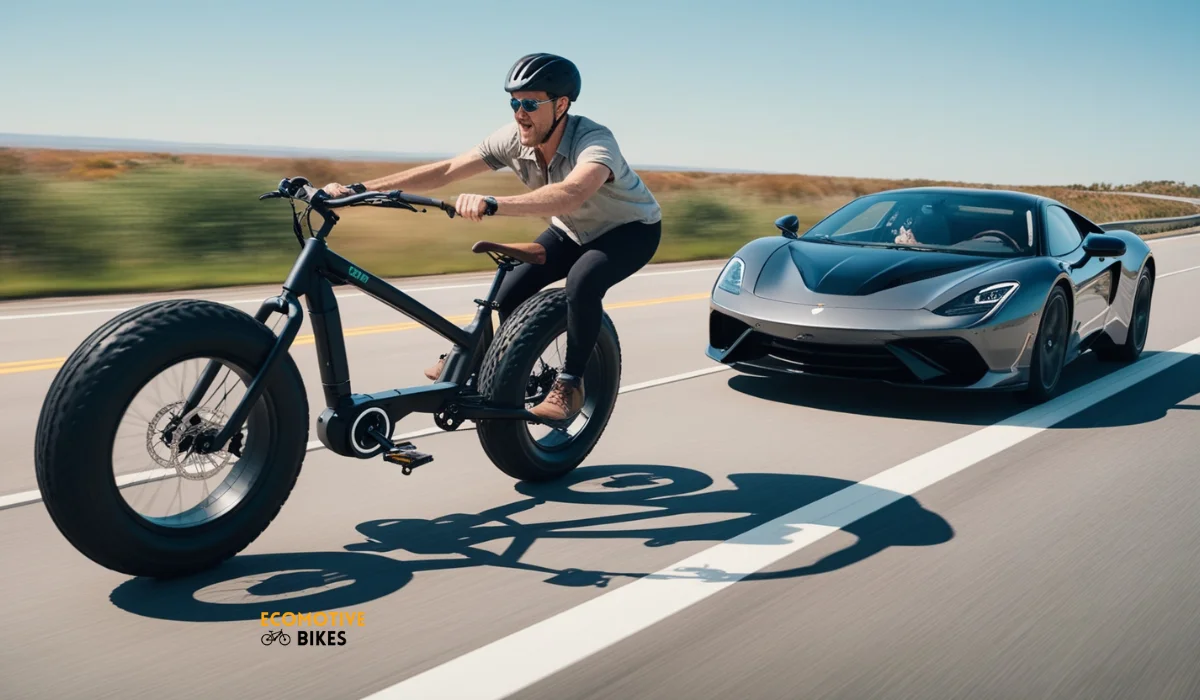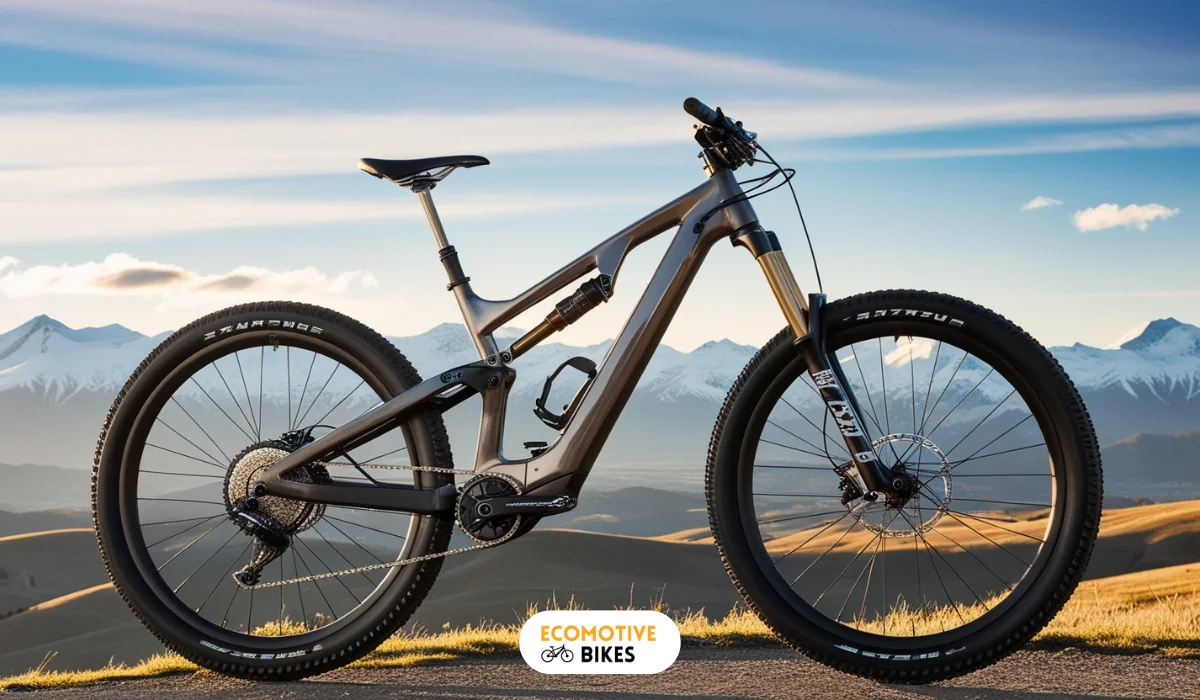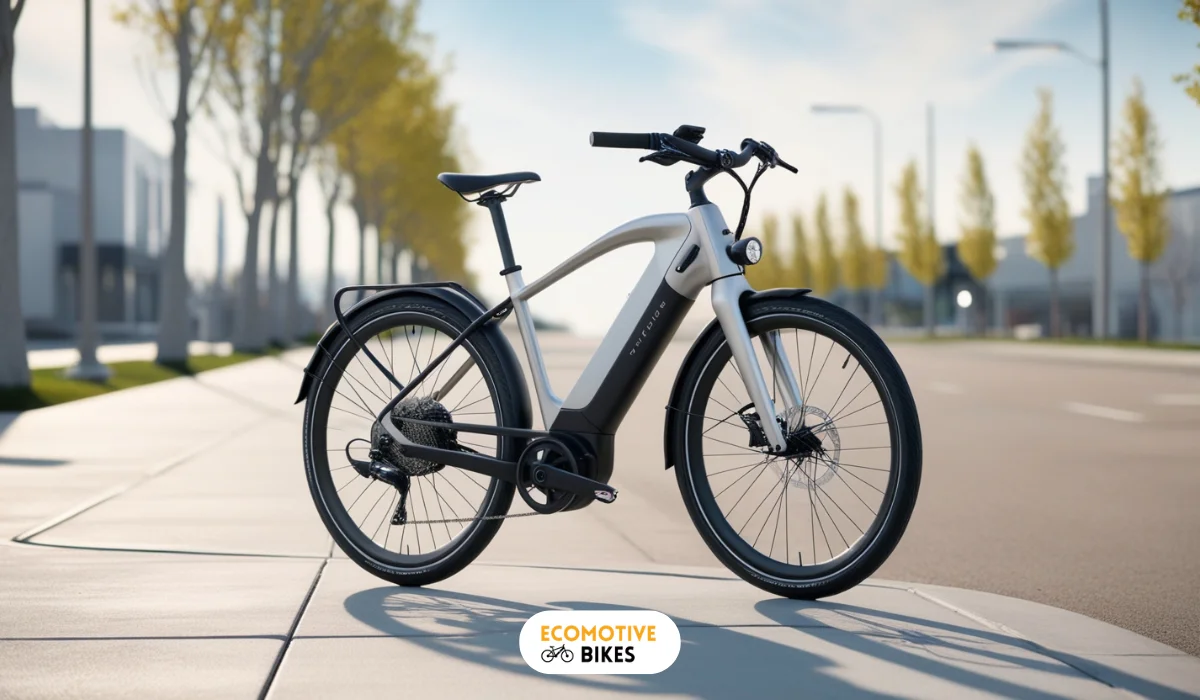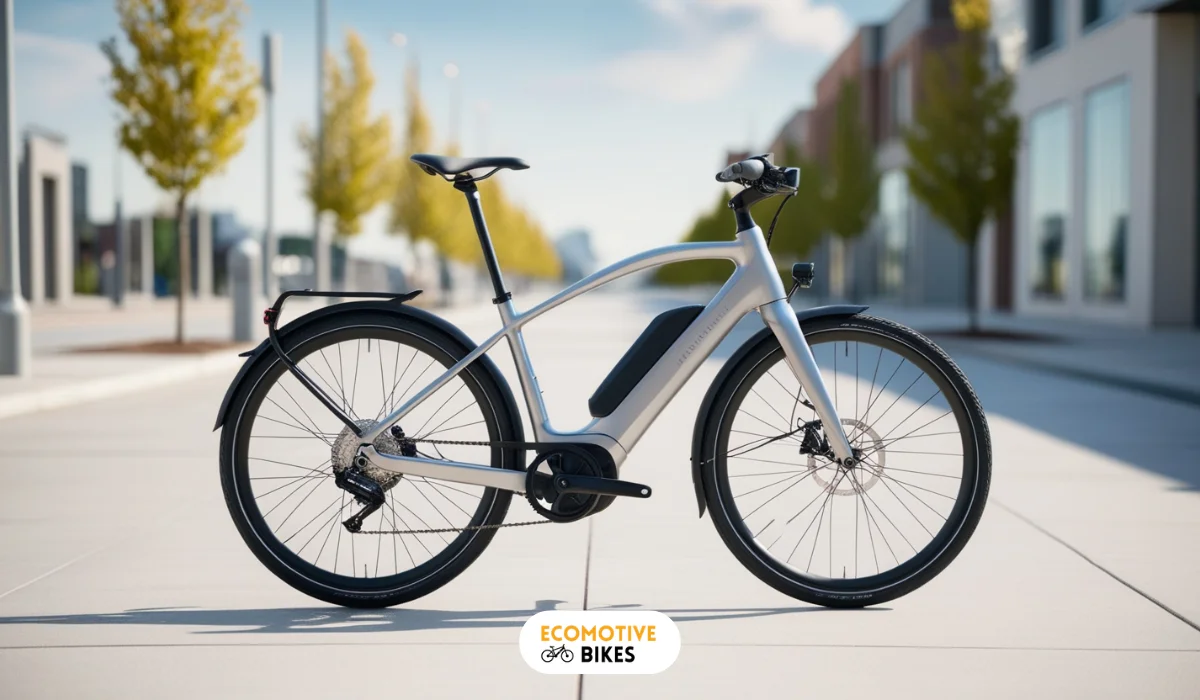How Do Electric Bikes Work? A Complete Guide to E-Bike Functionality
Learn how do electric bikes work, including motor types, battery power, and pedal assist systems. Explore the mechanics behind e-bike technology.
Table of Contents
Related Articles:
Electric bikes- those sleek machines that combine human power with electric assistance and deliver a smooth efficient and enjoyable ride. But how do electric bikes work?
Curious to know about its workings, then come and walk through the path of intricate components and technologies that make electric bikes tick. From the motor to the battery, we uncovered the secrets behind their operation. So, let’s explore the world of electric bikes and discover how they work!

The key components of electric bike
Electric bikes rely on a sophisticated interplay of components – the BMSC to deliver a smooth and efficient riding experience. This BMSC stands for battery, motor, sensors and controller are integral parts of an e-bike’s functionality.
Battery
Battery is the power source that drives the electric motor. It can be located in various positions on the bike, depending on the frame design. Charging times vary based on the battery’s capacity and charging method.
Lithium-ion batteries are the most common type due to their high energy density and long lifespan. However, other battery technologies may be used in some e-bikes.
Motors
The heart of an e-bike is its motor, which provides the electrical power to assist the rider’s pedaling. Motors can be located in the front hub, rear hub, or mid-drive, each offering distinct advantages:
- Front hub motors: Lightweight and efficient, but may affect handling.
- Rear hub motors: Powerful and provide good traction, especially on hills.
- Mid-drive motors: Offer a natural riding experience and provide excellent torque and acceleration.
The motor’s primary function is to provide torque, enhancing the rider’s pedaling power. More advanced motors deliver greater torque, resulting in increased power output.
Sensor
Sensors play a crucial role in optimizing the e-bike’s performance. They measure the rider’s pedaling input and adjust the motor’s assistance accordingly. There are two main types of sensors:
- Cadence sensors: Measure the speed at which the pedals are rotating.
- Torque sensors: Measure the force applied to the pedals, providing a more responsive and efficient riding experience.
Controller
The controller is a crucial component of an electric bike, enabling riders to adjust the level of electric assistance. There are two primary types: pedal-activated and throttle-based. Pedal-activated controllers provide assistance when pedaling, while throttle-based controllers offer assistance with a simple twist or press.
E-bikes are generally easy to use, ride, and maintain, requiring minimal upkeep beyond that of a traditional bicycle. Understanding the controller’s functions is essential for maximizing your e-bike experience.
How does an electric bike work?
- Battery: E-bike batteries play a crucial role in powering the motor of an electric bike. The capacity of the battery, measured in watt-hours, directly impacts how far and how fast you can ride. With advancements in lithium battery technology, electric bikes now offer more power in a compact design placed low and centered on the bicycle for optimal balance.
- Sensor: With sensors monitoring speed and torque, electric bikes intelligently control when to engage the motor’s assistance. Speed sensors track your velocity, while torque sensors measure your pedaling effort. Both work seamlessly to provide the right amount of assistance, ensuring a smooth and efficient riding experience. Plus, these sensors contribute to a safer and more enjoyable ride, enhancing overall performance.
- Motors: Sensors integrated with electric bike motors detect your pedaling and adjust the motor’s assistance accordingly, providing a seamless riding experience. Mechanisms inside the motor transform electrical power into mechanical energy, propelling the bike forward with ease. With various motor positions—front hub, rear hub, or center-mounted—riders can enjoy enhanced traction, handling, and stability based on their preferences, ensuring a versatile and dynamic ride every time.
- Controller: The controller is a key component of an electric bike, regulating the level of electric assistance. Pedal-activated controllers provide power while pedaling, while throttle-based controllers offer assistance with a simple twist or press. E-bikes are generally user-friendly and require minimal maintenance. Understanding the controller’s functions is essential for optimizing your e-bike experience.
How electric bike motors work?
Electric bike motors are designed to work in conjunction with the rider’s pedaling input. Sensors integrated with electric bike motors detect your pedaling and adjust the motor’s assistance accordingly, providing a seamless riding experience.
Mechanisms inside the motor transform electrical power into mechanical energy, propelling the bike forward with ease. With various motor positions—front hub, rear hub, or center-mounted—riders can enjoy enhanced traction, handling, and stability based on their preferences, ensuring a versatile and dynamic ride every time.
What is wattage?
Wattage is a crucial metric that indicates the power output of an electric bike’s motor. It plays a significant role in determining the bike’s speed, acceleration, and overall performance.
When evaluating electric bike motors, you’ll often encounter two power ratings: peak power and nominal power. Peak power represents the maximum power output the motor can achieve under ideal conditions, while nominal power indicates its typical operating power. For instance, a 52-volt battery paired with a 20-amp controller will produce a calculated power of 1,040 watts.
These power ratings is essential for calculating watt-hours, a metric that helps estimate the bike’s range and battery life. By knowing the wattage of your e-bike’s motor, you can make informed decisions about its suitability for your riding needs and expectations.
Why does wattage matter for an e-bike?
Wattage is a critical factor that sets electric bikes apart. It directly influences the motor’s power output, affecting performance and endurance. Higher-wattage motors require more powerful batteries to support their increased energy demands.
The relationship between wattage, voltage, and amp-hours is essential for calculating watt-hours, a metric that indicates the battery’s energy capacity. The watt-hours of your battery, you can estimate its range and determine how long your bike can run before needing a recharge. This information is valuable when selecting an electric bike that aligns with your riding needs and preferences.
How do electric bike batteries work?
Electric bikes are powered by a battery, which stores electrical energy and supplies it to the motor. The battery’s capacity, measured in watt-hours, determines the bike’s range and speed. Advancements in lithium battery technology have enabled electric bikes to offer more power in a smaller, lighter package.
What is voltage?
Voltage measures how much power the battery can send to your bike’s motor. Higher voltage means more power can flow from the battery to the motor in less time, boosting performance. Combined with amp-hours, the voltage gives you an idea of the battery’s watt potential. You will see the voltage listed with the battery. Batteries for premium bikes might be 48 or 52 volts. Lithium batteries offer much higher voltages compared to their older lead-acid counterparts.
How does voltage impact an electric bike’s operation?
Voltage plays a crucial role in an electric bike’s performance. Higher voltage batteries operate more efficiently, requiring less current while supplying the same amount of power, resulting in greater efficiency and longer battery range. Higher voltage batteries help your bike climb hills, carry heavier loads, and provide the necessary extra push. These higher-voltage batteries deliver electricity from the battery to the motor faster than lower-voltage batteries, enhancing the overall performance of your e-bike.
What are amp-hours on a battery?
Amp-hours (Ah) are a crucial metric that indicates the capacity of a battery. It measures the amount of electrical energy a battery can deliver over a period of time. For instance, a 20 Ah battery can supply 20 amps of current for one hour or 10 amps for two hours.
A higher amp-hour rating generally translates to a longer battery life for similar usage patterns. However, other factors, such as battery technology and charging conditions, can also influence battery performance.
Why do amp-hours matter for e-bikes?
Amp-hours (Ah) are a critical metric that directly impacts an electric bike’s range or the distance it can travel on a single charge. When combined with battery voltage, amp-hours determine the total energy capacity, measured in watt-hours.
Amp-hours are essential for comparing different e-bike models and selecting the appropriate charger. A battery with a higher amp-hour rating can provide a longer range, allowing you to enjoy extended rides without frequent recharging.
Amp-hours alongside voltage and wattage, you can make informed decisions about your e-bike’s battery and ensure a more efficient and enjoyable cycling experience.
How do e-bike controllers work?
The controller is a crucial component of an electric bike, regulating the level of electric assistance provided to the rider. It’s typically located on the handlebar for easy access and comes in two main types: pedal-activated and throttle-based.
- Pedal-activated controllers: These controllers provide electric assistance based on the rider’s pedaling cadence. As the rider pedals, the controller activates the motor, offering varying levels of support. This type of controller is often preferred by riders who enjoy a more natural and engaging riding experience.
- Throttle-based controllers: Throttle-based controllers allow riders to directly control the motor’s power using a twist-grip or thumb-press mechanism. This type of controller is ideal for riders who prefer a more hands-off approach, as it enables them to accelerate and maintain speed without pedaling.
Some e-bikes may incorporate a combination of pedal-activated and throttle-based controllers, offering riders the flexibility to choose between the two modes depending on their preferences and riding conditions.
Related: How fast can an ebike go?
The future of electric bikes
Technological advancements in e-bikes
Electric bikes have undergone significant technological advancements in recent years, becoming more efficient, powerful, and user-friendly. Equipped with sophisticated sensors, powerful motors, and long-lasting batteries, e-bikes offer a sustainable and environmentally friendly alternative to traditional vehicles.
Environmental impact and sustainability
The trend towards e-bike ownership is evident, with sales steadily increasing in recent years. This growing popularity reflects a shift towards sustainable mobility solutions and a desire for a more environmentally friendly transportation option. As e-bikes become more affordable and accessible, we can expect to see even greater adoption in the years to come.
As awareness of climate change grows, e-bikes are gaining popularity as a means of reducing carbon emissions and promoting sustainable transportation. Their zero-emission nature makes them an attractive option for urban commuters and outdoor enthusiasts alike.
Trends in e-bike usage and ownership
Future advancements in electric bike technology are likely to focus on enhancing battery life, motor efficiency, and overall performance. As these improvements continue, e-bikes will become even more accessible and appealing to a wider range of consumers.
Final Words: How do electric bikes work?
Electric bikes, with their blend of technology and eco-friendliness, offer a thrilling and efficient way to commute. By understanding how do electric bikes work, you can make an informed decision about whether one is right for you. So, saddle up and embark on a journey powered by electricity!





